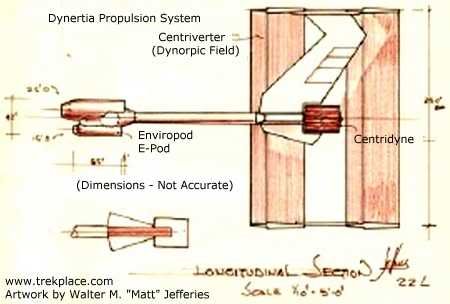Okay, to clarify my idea...
The idea is kind of to use a ring-ship set-up kind of like the ducted propellers shown in this image.
Just not with the plane attached
(or the propellers in the duct).
With the main hull-fuselage to kind of look like either the pod the ducted-prop is attached to
(but with no hole in the front), and like the 1960's Manned Orbiting Laboratory
(MOL) Concept
Or some kind of mix between the two
(hull/fuselage-wise). For example the hub on the ducted prop is a bit plumper which actually looks better with the ring-ship, though the gemini-like capsule at the front of the MOL and the basic design features of the MOL is more in the spirit of simplicity.
Oddly the fins which the ducted prop design features
(assuming they were about half the span they are) could actually be of use as they could mount rocket-engines on them.
The Manned-Orbiting Laboratory for the record was designed to be launched from the ground by a series of rockets, so there isn't an issue here regarding launching something of this particular size off the ground. Don't know how much difference there would be in weight however.
I don't know how practical launching the ring would be. Honestly the idea of launching the two separately and connecting them in orbit makes more sense.
While in the story Zephram Cochrane was supposed to have made his flight around the time of WWIII, I never was a fan of the idea of Cochrane doing all this research basically in a shack with such little outside support. I'm not saying he needed to have all the space-agencies in the world working around the clock, but some more assistance would have been useful I'd say.
And the idea of having Cochrane being a jackass is okay, but the thing about him not liking to fly and taking trains sounds completely absurd. The guy would certainly require a pilot's liscence for this flight in the role that he was portrayed to have made, and it seems quite bizarre that a guy who hates and deathly fears flying would go through all the machinations to learn how to fly.
Next, to fix the discrepancy between the first warp flight originally stated to be in 2061, and later altered to April 2063, the best solution would be to have the first warp-vehicles to be much smaller unmanned vehicles.
They, being smaller, and not bound by various constraints of having to carry people onboard could be launched into orbit with much greater ease. Also, in case anything serious went wrong, it would be far better for it to happen on an unmanned craft than one carrying a few people onboard.
Couple of tests, anything goes wrong they either fix it, build a new one (if it blows up or the first one was inadequate), re-test, break the speed of light.
Then over the next two, they then start somewhere along building a manned version that could carry the desired payload, meet safety requirements etc, get everything ready and break the speed of light
Still I have trouble with the idea of them doing it on the first flight. Wouldn't they have to go through all sorts of efforts calibrating the warp-engines? Also, it's not the exact same design in shape or mass distribution as the unmanned versions. So I think they'd need at least a few flights for this all to work. So the ability to refuel the ship in orbit would have to happen a few times for this all to work.
Whether this would be carried out by a space-station or by stuff sent-up from Earth, I don't know.
One idea I was thinking of, though I'm not 100% sure to go for it, was to go with matter/anti-matter in the warp-drive. I don't even know if in TOS it was specifically said to be fusion powered. Regardless, I'd want the fuel to be carried in the warp-engine
(the ring) -- it seems less complicated than having the reactor in the ship and then shuffling the energy to the ring. It would also take up less space inside the rest of the ship. It would also open up the option of being able to jettison the ring should something go wrong.
The other thing I'm wondering is -- is the capsule necessary for getting back down to Earth? I mean Richard Branson's planning his Virgin Galactic service -- sure it can't attain a full orbit, but in 50 or 60 years a new design could allow a vehicle of similar size and such to attain an orbit, then de-orbit, and something like that could be sent up, dock with them, pick them up, and then land them back on Earth right? Either way a capsule would fit on the design.
I'd like to hear opinions whether they be to the re-imagined design I thought up, or the re-imagined story-line.
CuttingEdge100







 )
) 

